
Science from Murf .LLC











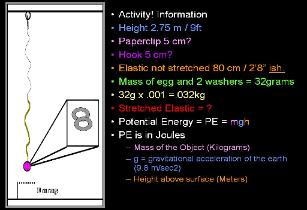
















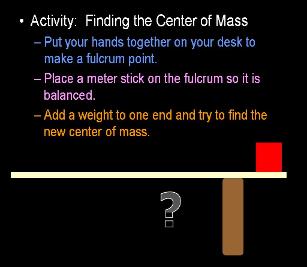












































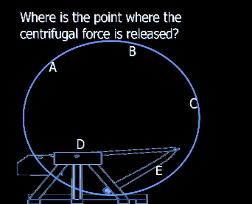








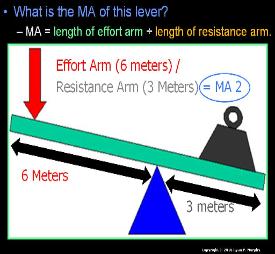




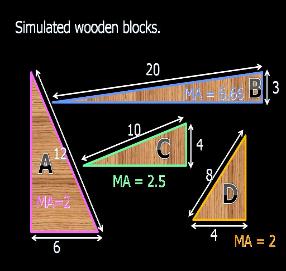









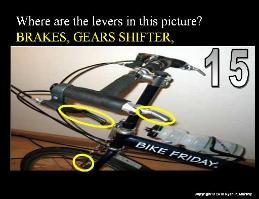
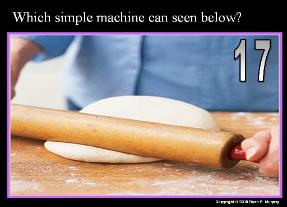





| Copyright © 2011 Science from Murf LLC. All rights reserved. |

This unit covers science topics associated
with Newtons Laws of Motion, Friction,
Aerodynamics, Potential and Kinetic Energy,
Speed, Velocity, Acceleration, Work,
Machines, Catapults, Trajectory, Force,
Simple Machines, Mechanical Advantage,
Compound Machines, Mousetrap Cars, and
much more. A bundled homework package,
unit notes, answer keys, worksheets, built-in
hands on activities, video and academic
links, and much more are included. Student
favorites include the mousetrap car project,
aerodynamic challenge, pulley workshop,
battery ramp F=ma, and much more.
Teaching Duration = 9 weeks
with Newtons Laws of Motion, Friction,
Aerodynamics, Potential and Kinetic Energy,
Speed, Velocity, Acceleration, Work,
Machines, Catapults, Trajectory, Force,
Simple Machines, Mechanical Advantage,
Compound Machines, Mousetrap Cars, and
much more. A bundled homework package,
unit notes, answer keys, worksheets, built-in
hands on activities, video and academic
links, and much more are included. Student
favorites include the mousetrap car project,
aerodynamic challenge, pulley workshop,
battery ramp F=ma, and much more.
Teaching Duration = 9 weeks
Areas of Focus within The Motion and Machines Unit:
-Newtons First Law, Inertia, Friction, Four Types of Friction, Negatives and Positives of Friction,
Newton’s Third Law, Newton’s Second Law, Potential Energy, Kinetic Energy, Mechanical Energy,
Forms of Potential to Kinetic Energy, Speed, Velocity, Acceleration, Deceleration, Momentum, Work,
Machines (Joules), Catapults, Trajectory, Force, Simple Machines, Pulley / (MA Mechanical
Advantage), Lever / (MA), Wedge / (MA), Wheel and Axle (MA), Inclined Plane / (MA), Screw / MA,
Mousetrap Cars, and much more.
-Newtons First Law, Inertia, Friction, Four Types of Friction, Negatives and Positives of Friction,
Newton’s Third Law, Newton’s Second Law, Potential Energy, Kinetic Energy, Mechanical Energy,
Forms of Potential to Kinetic Energy, Speed, Velocity, Acceleration, Deceleration, Momentum, Work,
Machines (Joules), Catapults, Trajectory, Force, Simple Machines, Pulley / (MA Mechanical
Advantage), Lever / (MA), Wedge / (MA), Wheel and Axle (MA), Inclined Plane / (MA), Screw / MA,
Mousetrap Cars, and much more.



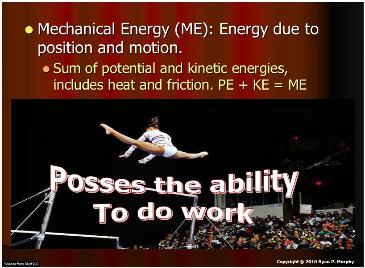






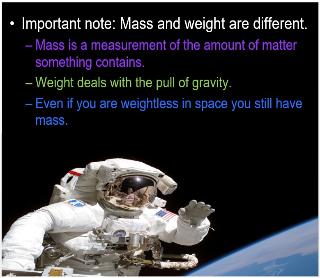

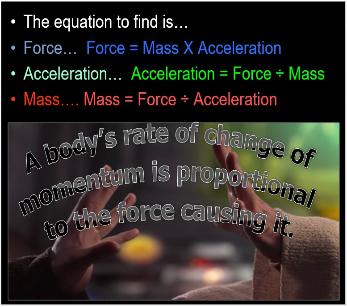







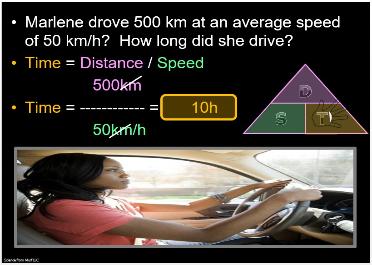























The Motion and Machines Unit covers science topics associated with Newtons Laws of Motion, Friction, Laws of
Thermodynamics, PE and KE, Speed, Velocity, Acceleration, Work, Machines, Force, Simple Machines, MA, Compound
Machines. This unit includes an interactive and engaging PowerPoint Presentation of 2,800+ slides with built-in class notes
(Red Slides), lab activities, project ideas, discussion questions, assessments, challenge questions with answers, review
games, videos, and much more. Text is in large print (32 font) and is placed at the top of each slide so it can be read from all
angles of a classroom. A shade technique and color coded text maintains focus and allows teacher to control the pace of the
lesson. Also included is a 12 page bundled homework / assessment that chronologically follows the PowerPoint slideshow,
as well as a 8 page modified assessment. 12 pages of class notes with images are also included for students who require
modifications, as well as answer keys to both assessments for support professionals, teachers, and homeschool parents.
Hundreds of video and academic links are provided and a slide within the slideshow cues teacher / parent when the videos
are most relevant to play. Video shorts usually range from 2-7 minutes. Three PowerPoint review games are included.
Answers to the PowerPoint review games are provided in PowerPoint form so students can self-assess. Lastly, several class
games such as guess the hidden picture beneath the boxes, and the find the hidden owl somewhere within the slideshow
are provided.
Thermodynamics, PE and KE, Speed, Velocity, Acceleration, Work, Machines, Force, Simple Machines, MA, Compound
Machines. This unit includes an interactive and engaging PowerPoint Presentation of 2,800+ slides with built-in class notes
(Red Slides), lab activities, project ideas, discussion questions, assessments, challenge questions with answers, review
games, videos, and much more. Text is in large print (32 font) and is placed at the top of each slide so it can be read from all
angles of a classroom. A shade technique and color coded text maintains focus and allows teacher to control the pace of the
lesson. Also included is a 12 page bundled homework / assessment that chronologically follows the PowerPoint slideshow,
as well as a 8 page modified assessment. 12 pages of class notes with images are also included for students who require
modifications, as well as answer keys to both assessments for support professionals, teachers, and homeschool parents.
Hundreds of video and academic links are provided and a slide within the slideshow cues teacher / parent when the videos
are most relevant to play. Video shorts usually range from 2-7 minutes. Three PowerPoint review games are included.
Answers to the PowerPoint review games are provided in PowerPoint form so students can self-assess. Lastly, several class
games such as guess the hidden picture beneath the boxes, and the find the hidden owl somewhere within the slideshow
are provided.

| Bundled homework / classwork chronologically follows the PowerPoint roadmap for a fantastic review of classroom lessons. |













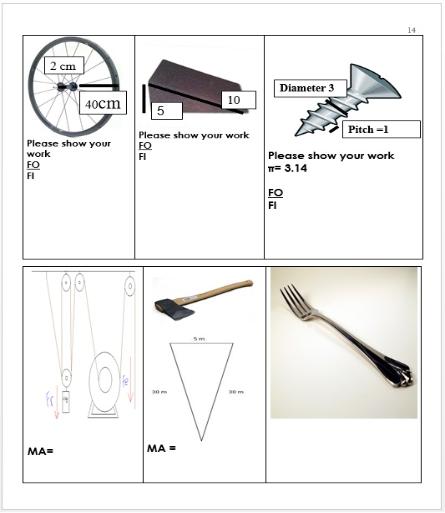



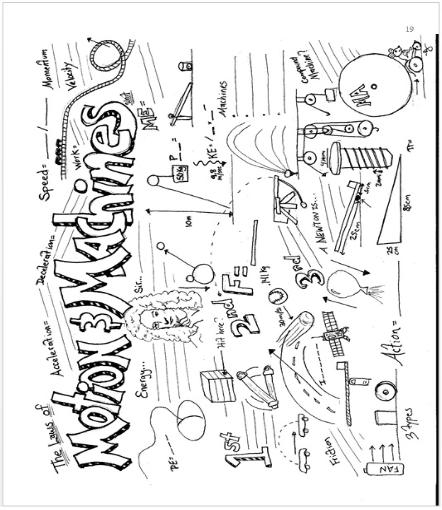




Next Generation Science Standards (NGSS)
MS.PS2.1 (Apply Newton’s 3rd Law to design a solution to a problem
involving colliding objects)
• Students spend considerable time learning the third law, visiting and
explaining video links, and much more. Many word problems are included. A
neat activity called parked have students roll batteries down small ramps
that hit a plastic cup filled with washers. Students change the height of the
ramp, add washers to the car, and swap AA for D batteries. Data is
collected throughout.
-MS.PS2.2 (Apply an investigation to Newton’s 1st and 2nd Law that
examines the change in an objects motion may depend on the sum of the
forces and mass of the object).
• The activity in MS.PS2.1 covers this standard as well. Students
measure the weight of the two batteries (AA, D), and the force (height of the
ramp) Changes throughout activity. Many questions at the end require the
use of data to explain changes in the parked cars motion.
MS.PS2.2 (Construct and interpret graphs to describe relationship of kinetic
energy to mass of an object and to the speed of an object)
• Student’s conduct a number of studies and difficult word problems with
kinetic energy. One nice activity collects and interprets data rolling different
size batteries down ramps and hitting cups filled with washers. Other
simulators, video links, and simply demonstrations cover the topic in detail.
MS.PS2.1 (Apply Newton’s 3rd Law to design a solution to a problem
involving colliding objects)
• Students spend considerable time learning the third law, visiting and
explaining video links, and much more. Many word problems are included. A
neat activity called parked have students roll batteries down small ramps
that hit a plastic cup filled with washers. Students change the height of the
ramp, add washers to the car, and swap AA for D batteries. Data is
collected throughout.
-MS.PS2.2 (Apply an investigation to Newton’s 1st and 2nd Law that
examines the change in an objects motion may depend on the sum of the
forces and mass of the object).
• The activity in MS.PS2.1 covers this standard as well. Students
measure the weight of the two batteries (AA, D), and the force (height of the
ramp) Changes throughout activity. Many questions at the end require the
use of data to explain changes in the parked cars motion.
MS.PS2.2 (Construct and interpret graphs to describe relationship of kinetic
energy to mass of an object and to the speed of an object)
• Student’s conduct a number of studies and difficult word problems with
kinetic energy. One nice activity collects and interprets data rolling different
size batteries down ramps and hitting cups filled with washers. Other
simulators, video links, and simply demonstrations cover the topic in detail.
MS.PS3.2 (Develop a model of how objects interact at distance changes in regards to varying potential energy)
• A neat bungee jumping egg activity has students calculate Potential Energy and create a bungee jumping egg so it gets within 10 cm of the floor without breaking.
The ramp activity with batteries and the parked car (cup with washers) also address Potential Energy and include a number of graphing exercises. Students go beyond the
boundary and calculate PE, watch videos, record red slide notes, answer homework questions, and much more. Potential chemical is also addressed in this unit and the
matter, energy, and the environment unit.
MS.PS3.5 (Present arguments that when the kinetic energy of an object changes, energy is transferred to or from the object).
• The ramp and battery activity mentioned above covers this standard nicely. When the ramp height is increased the parked car with washers is pushed further by the
rolling battery. Mass is brought into play when the small and large battery are compared. Many word problems are provided and again the boundary is passes as students
learn to calculate kinetic energy.
HS.PS2.1 (Analyze data to support the claim that Newton’s second law of motion describes the mathematical relationship among the net force on a macroscopic object, its
mass, and its acceleration).
• Students conduct a number of activities associated with Newton’s Second Law, see videos, answer word problems, collect and analyze data, and much more.
Students also answer several mathematical calculations and conduct the parked car activity described above.
HS.PS2.2 (Use mathematical representations to support the claim that the total momentum of an object is conserved).
• Slides, links, and video provided about momentum conservation.
HS.PS2.3 (Apply scientific and engineering ideas to design, evaluate, and refine a device that minimizes the force on an object during collision).
• An egg drop activity is described with link / instructions. This is a culminating project at the end of the unit.
HS.PS3.1 (Create a model to calculate the change in the energy of one component in a system when the change in energy of the other component flows in and out of the
system and is known).
• Students calculate potential and kinetic energy in this unit. Slides, word problems, video links and visuals are provided.
HS.PS3.1 (Develop and use models to illustrate that energy at the macroscopic scale can be accounted for a combination of energy associated with the motion of particles
and objects, and energy associated position of particles (objects).
• Students see a number of diagrams, step by step slides, and explore how energy isn’t destroyed, but transferred as it changes form, and calculate PE and KE
• A neat bungee jumping egg activity has students calculate Potential Energy and create a bungee jumping egg so it gets within 10 cm of the floor without breaking.
The ramp activity with batteries and the parked car (cup with washers) also address Potential Energy and include a number of graphing exercises. Students go beyond the
boundary and calculate PE, watch videos, record red slide notes, answer homework questions, and much more. Potential chemical is also addressed in this unit and the
matter, energy, and the environment unit.
MS.PS3.5 (Present arguments that when the kinetic energy of an object changes, energy is transferred to or from the object).
• The ramp and battery activity mentioned above covers this standard nicely. When the ramp height is increased the parked car with washers is pushed further by the
rolling battery. Mass is brought into play when the small and large battery are compared. Many word problems are provided and again the boundary is passes as students
learn to calculate kinetic energy.
HS.PS2.1 (Analyze data to support the claim that Newton’s second law of motion describes the mathematical relationship among the net force on a macroscopic object, its
mass, and its acceleration).
• Students conduct a number of activities associated with Newton’s Second Law, see videos, answer word problems, collect and analyze data, and much more.
Students also answer several mathematical calculations and conduct the parked car activity described above.
HS.PS2.2 (Use mathematical representations to support the claim that the total momentum of an object is conserved).
• Slides, links, and video provided about momentum conservation.
HS.PS2.3 (Apply scientific and engineering ideas to design, evaluate, and refine a device that minimizes the force on an object during collision).
• An egg drop activity is described with link / instructions. This is a culminating project at the end of the unit.
HS.PS3.1 (Create a model to calculate the change in the energy of one component in a system when the change in energy of the other component flows in and out of the
system and is known).
• Students calculate potential and kinetic energy in this unit. Slides, word problems, video links and visuals are provided.
HS.PS3.1 (Develop and use models to illustrate that energy at the macroscopic scale can be accounted for a combination of energy associated with the motion of particles
and objects, and energy associated position of particles (objects).
• Students see a number of diagrams, step by step slides, and explore how energy isn’t destroyed, but transferred as it changes form, and calculate PE and KE
Below are just a few of the typical standards that this unit addresses for those that are interested. This unit does cover many topics / standards that are not addressed
below.
●Keep a journal record of observations, recognizing patterns, summarizing findings, and reflecting on the observations.
●Identify the most appropriate materials for a given design task with requirements for specific properties, such as weight, strength, hardness, and flexibility.
●Explain that when a force is applied to an object, it reacts in one of three ways: the object either speeds up, slows down, or goes in a different direction.
●Describe the relationship between the strength of a force on an object and the resulting effect, such as the greater the force, the greater the change in motion.
●Explain the how balanced and unbalanced forces are related to an object’s motion.
●Explain that an object's motion can be tracked and measured over time and that the data can be used to describe its position.
●Use a variety of tools and formats (oral presentations, journals, and multimedia presentations) to summarize and communicate the results of observations.
●Organize observations and data into tables, charts and graphs.
Below are just a few of the typical standards that this unit addresses for those that are interested. This unit does cover many topics / standards that are not addressed
below.
●Keep a journal record of observations, recognizing patterns, summarizing findings, and reflecting on the observations.
●Identify the most appropriate materials for a given design task with requirements for specific properties, such as weight, strength, hardness, and flexibility.
●Explain that when a force is applied to an object, it reacts in one of three ways: the object either speeds up, slows down, or goes in a different direction.
●Describe the relationship between the strength of a force on an object and the resulting effect, such as the greater the force, the greater the change in motion.
●Explain the how balanced and unbalanced forces are related to an object’s motion.
●Explain that an object's motion can be tracked and measured over time and that the data can be used to describe its position.
●Use a variety of tools and formats (oral presentations, journals, and multimedia presentations) to summarize and communicate the results of observations.
●Organize observations and data into tables, charts and graphs.
below.
●Keep a journal record of observations, recognizing patterns, summarizing findings, and reflecting on the observations.
●Identify the most appropriate materials for a given design task with requirements for specific properties, such as weight, strength, hardness, and flexibility.
●Explain that when a force is applied to an object, it reacts in one of three ways: the object either speeds up, slows down, or goes in a different direction.
●Describe the relationship between the strength of a force on an object and the resulting effect, such as the greater the force, the greater the change in motion.
●Explain the how balanced and unbalanced forces are related to an object’s motion.
●Explain that an object's motion can be tracked and measured over time and that the data can be used to describe its position.
●Use a variety of tools and formats (oral presentations, journals, and multimedia presentations) to summarize and communicate the results of observations.
●Organize observations and data into tables, charts and graphs.
Below are just a few of the typical standards that this unit addresses for those that are interested. This unit does cover many topics / standards that are not addressed
below.
●Keep a journal record of observations, recognizing patterns, summarizing findings, and reflecting on the observations.
●Identify the most appropriate materials for a given design task with requirements for specific properties, such as weight, strength, hardness, and flexibility.
●Explain that when a force is applied to an object, it reacts in one of three ways: the object either speeds up, slows down, or goes in a different direction.
●Describe the relationship between the strength of a force on an object and the resulting effect, such as the greater the force, the greater the change in motion.
●Explain the how balanced and unbalanced forces are related to an object’s motion.
●Explain that an object's motion can be tracked and measured over time and that the data can be used to describe its position.
●Use a variety of tools and formats (oral presentations, journals, and multimedia presentations) to summarize and communicate the results of observations.
●Organize observations and data into tables, charts and graphs.
| Chronologically Follows the PowerPoint Slide show. Great for students who require assistance and support professionals. |


















Dear Valued Educator,
Shortly after purchase a download link will automatically be sent to your email address from PayLoadz.com. This is a safe
and secure company that specializes in delivering large digital files. If you have any questions please feel free to contact me.
Thank you for visiting this website.
Sincerely,
Science from Murf .LLC
www.sciencepowerpoint@gmail.com
Shortly after purchase a download link will automatically be sent to your email address from PayLoadz.com. This is a safe
and secure company that specializes in delivering large digital files. If you have any questions please feel free to contact me.
Thank you for visiting this website.
Sincerely,
Science from Murf .LLC
www.sciencepowerpoint@gmail.com
Newton's Laws of Motion and Simple Machines Unit (Instant Download) $29.99
Entire Science Curriculum (20 Units of Study) Instant Download $199.99
Physical Science Curriculum (4 Units of Study) Instant Download $64.99
Visit my Pinterest Page >>>>>>>>


